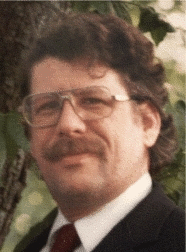Bruce: docetism
Friday, September 28, 2018
Meditation:
As evening approached, there came a rich man from Arimathea, named Joseph, who had himself become a disciple of Jesus. Going to Pilate, he asked for Jesus’ body, and Pilate ordered that it be given to him. Joseph took the body, wrapped it in a clean linen cloth, and placed it in his own new tomb that he had cut out of the rock. He rolled a big stone in front of the entrance to the tomb and went away.
—Matthew 27:57-60 (NIV)
Quotation:
One attempt to reconcile the Gnostic doctrine [of the unreality or evilness] of matter with the apostolic teaching about Christ was the theory that the body which our Lord took at His coming into the world was not a real body but a phantom one. He only seemed to inhabit a material body, and from the Greek word dokein, which means “to seem”, people who held this theory were known as Docetists.
But if Christ’s incarnation was unreal, His death and resurrection were also unreal; and the whole gospel message was thus emptied of its truth and power. One unhappy legacy of this short-lived phase of Christian heresy ... remains to bedevil Christian witness to Muslims up to the present day. For when the Koran says of Jesus that “they did not kill Him, nor did they crucify Him: it was made a semblance to them”, we may infer that Muhammad was indebted for this idea to a Christian source tainted w ith Docetism.
... F. F. Bruce (1910-1990), The Apostolic Defense of the Gospel, London: Inter-Varsity Press, 1959, Grand Rapids: Eerdmans, 1959, p. 83-84 (see the book)
See also Matt. 27:57-60; John 1:14; 1 Cor. 12:3; 15:14; 1 John 4:2-3; 5:1
Quiet time reflection:
Lord, You tasted the reality of death.CQOD Blog email RSS
search script mobile
sub fb twt Jonah Ruth
Meditation:
As evening approached, there came a rich man from Arimathea, named Joseph, who had himself become a disciple of Jesus. Going to Pilate, he asked for Jesus’ body, and Pilate ordered that it be given to him. Joseph took the body, wrapped it in a clean linen cloth, and placed it in his own new tomb that he had cut out of the rock. He rolled a big stone in front of the entrance to the tomb and went away.
—Matthew 27:57-60 (NIV)
Quotation:
One attempt to reconcile the Gnostic doctrine [of the unreality or evilness] of matter with the apostolic teaching about Christ was the theory that the body which our Lord took at His coming into the world was not a real body but a phantom one. He only seemed to inhabit a material body, and from the Greek word dokein, which means “to seem”, people who held this theory were known as Docetists.
But if Christ’s incarnation was unreal, His death and resurrection were also unreal; and the whole gospel message was thus emptied of its truth and power. One unhappy legacy of this short-lived phase of Christian heresy ... remains to bedevil Christian witness to Muslims up to the present day. For when the Koran says of Jesus that “they did not kill Him, nor did they crucify Him: it was made a semblance to them”, we may infer that Muhammad was indebted for this idea to a Christian source tainted w ith Docetism.
... F. F. Bruce (1910-1990), The Apostolic Defense of the Gospel, London: Inter-Varsity Press, 1959, Grand Rapids: Eerdmans, 1959, p. 83-84 (see the book)
See also Matt. 27:57-60; John 1:14; 1 Cor. 12:3; 15:14; 1 John 4:2-3; 5:1
Quiet time reflection:
Lord, You tasted the reality of death.
search script mobile
sub fb twt Jonah Ruth




0 Comments:
Post a Comment
<< Home